Later Chinese Bronzes, Dating Them and Their Values
Later Chinese bronzes of the Song to Qing Dynasties up until around the 1970's got very little to no attention from scholars or collectors on a wide scale. The dating and understanding them was of little interest, especially in comparison to the ancient examples from the Shang, Zhou and Warring States eras until fairly recently on the collector-scholar spectrum. This lack of attention did not curiously include religious bronzes tied to figural examples of Buddhism.
Prior to the Song Dynasty (960-1279 CE), bronzes in China were primarily viewed and appreciated purely as ritual objects. Examples from the Song to Qing dynasties were created as works of art based on old forms as well as new shapes based not only on earlier bronzes but contemporary shapes adopted from popular ceramic types.
During the late 19th and early 20th C., later Chinese bronzes were bought and sold as low-priced curiosities and were sent to the west in massive numbers and sold only as "Asian" or "oriental decor". Most were sold with no information other than the obvious regarding it's shape, use, and material used. i.e. "old Chinese bronze incense burner", "dark Chinese bronze vase" .
A few years ago we did another post on this topic a few years ago with additional images. Click HERE. You can also see additional images in the Bidamount reference section of the Ulrich Hausmann Collection sold at Sotheby's you can see the catalog here.
Additional fine examples can also be found in The British Museum collection linked off the Museum link from the Bidamount Home Page or by Clicking Here.
Images and Information From Sotheby's, Later Chinese Bronzes From The Collection of Mr And Mrs Gerard Hawthorn 03 DECEMBER 2015 || HONG KONG
Auction results with lot notes.
A GOLD AND SILVER-INLAID BRONZE BOWL LATE MING DYNASTY, DATED IN ACCORDANCE TO 1616 OR 1556
150,000 — 200,000
9.3 cm., 3 5/8 in.
It is also somewhat related to an unusual and rare lian shaped incense burner by Lü Cizhou from the Water, Pine and Stone Retreat Collection, sold in these rooms, 8th April 2014, lot 219.
Clearly, the inlaid bowl is the work of a late Ming bronze workshop. From the small number of extant dated Hu Wenming vessels, it is possible to speculate that the bowl is more likely to emanate from the early 17th century, making 1616 the more probable date. For a Hu Wenming-marked bronze pou (dated in accordance with 1613) from the Dr and Mrs Peter Plesch Collection and later the Water, Pine and Stone Retreat Collection, see the example sold 4th April 2012, lot 188.
A BRONZE INCENSE BURNER LATE MING / EARLY QING DYNASTY
19.7 cm., 7 3/4 in.
A BRONZE RECTANGULAR INCENSE BURNER EARLY QING DYNASTY
across the handles 18 cm., 7 1/8 in.
A BRONZE CIRCULAR INCENSE BURNER LATE MING DYNASTY
width 10 cm., 3 7/8 in.
With its unusual but highly pleasing circular form, punctuated by raised fillets, this simple, yet highly tactile and pleasing incense burner fits perfectly into Hausmann's description. It is indeed a highly original and finely cast piece from the late Ming dynasty.
The enduring question as to which of the vast production of bronze incense burners cast with Xuande reign marks are indeed of the period and which are apocryphal is discussed by Gerard Tsang and Hugh Moss, Arts from the Scholar's Studio, Hong Kong, 1986, pg. 150, where it is concluded that the textual evidence is unreliable, and that 'accurate identification ... must therefore rest largely on the wares themselves'.
A BRONZE 'MYTHICAL BEAST' INCENSE BURNER AND COVER EARLY QING DYNASTY
height 13.2 cm., 5 1/8 in.
A BRONZE ALMS BOWL INCENSE BURNER LATE MING / EARLY QING DYNASTY
14.2 cm., 5 5/8 in.
Compare also two other examples of bronze alms bowl incense burners, both from the Water, Pine and Stone Retreat Collection, a small Yongzheng reign-marked example sold 8th April 2014, lot 203, and a gold-splashed vessel inscribed with the mark baoyong ('for treasured use'), sold, 8th April 2013, lot 117.
A BRONZE 'LUDUAN' INCENSE BURNER QING DYNASTY, 18TH / 19TH CENTURY
19.2 cm., 7 1/2 in.
A BRONZE CYLINDRICAL INCENSE BURNER, LIAN MARK AND PERIOD OF QIANLONG
diameter 12 cm., 4 3/4 in.
A PARCEL-GILT BRONZE ‘DRAGONS’ INCENSE BURNER, GUI BY HU WENMING, MING DYNASTY, 17TH CENTURY
19.5 cm., 7 5/8 in
PROVENANCE
CATALOGUE NOTE
Compare also another incense burner illustrated by Gerard Tsang and Hugh Moss, 'Chinese Metalwork of the Hu Wenming Group', Handbook, International Asian Antiques Fair, Hong Kong, 1984, p. 46, fig. 9. The difference in the designs of the dragons on all three incense burners suggests that these designs were beaten into the copper freehand, rather than around pre-formed moulds. If moulds had been used, there would seem little point in producing an almost identical incense burner with a slightly different design. These three incense burners, therefore, play an important role in our understanding of the techniques of the Hu Wenming workshop.
Examining and learning how to date later Chinese bronzes requires a lot of time and exposure to authenticated examples. Today the market is filled with millions of modern copies of very good quality, as well as some fairly convincing examples made during the Republic period. While many good examples were made from the Song Dynasty through the Qianlong period, many more were also made after 1900 right through to today. So take your time and look at as many as possible.
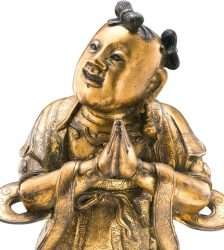
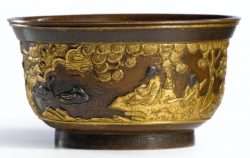
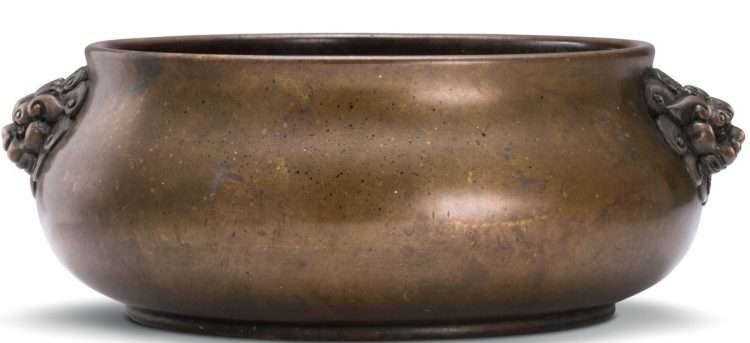
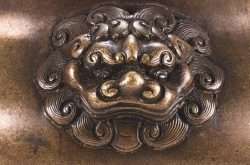
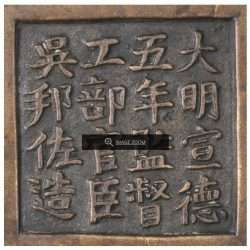
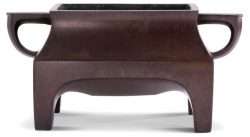

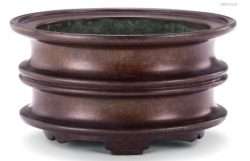
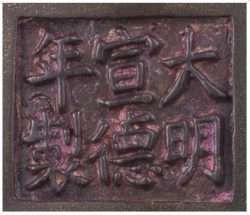
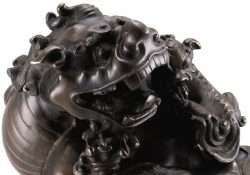
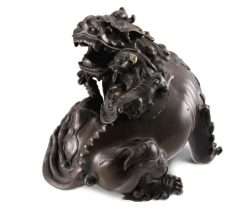
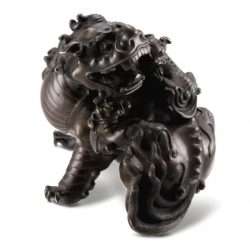
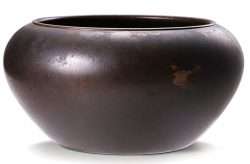
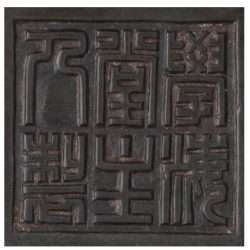
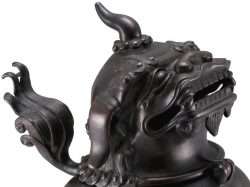
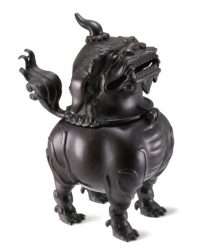
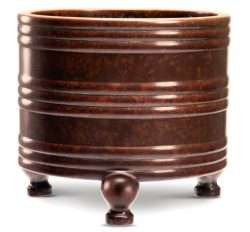
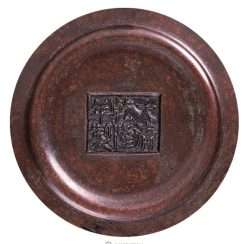
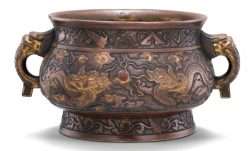
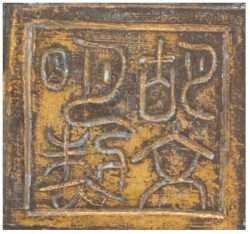
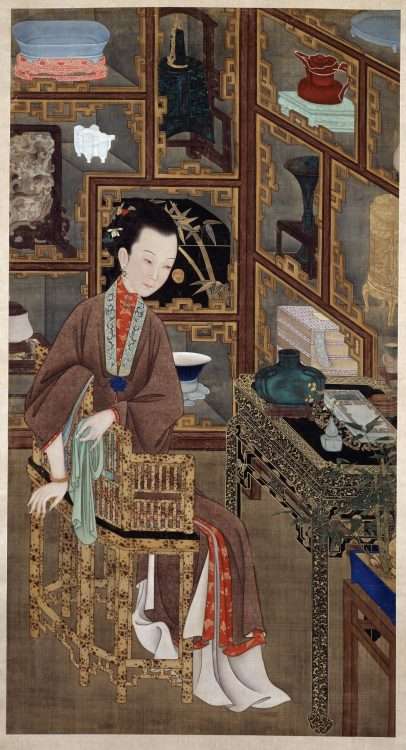
Leave a Reply